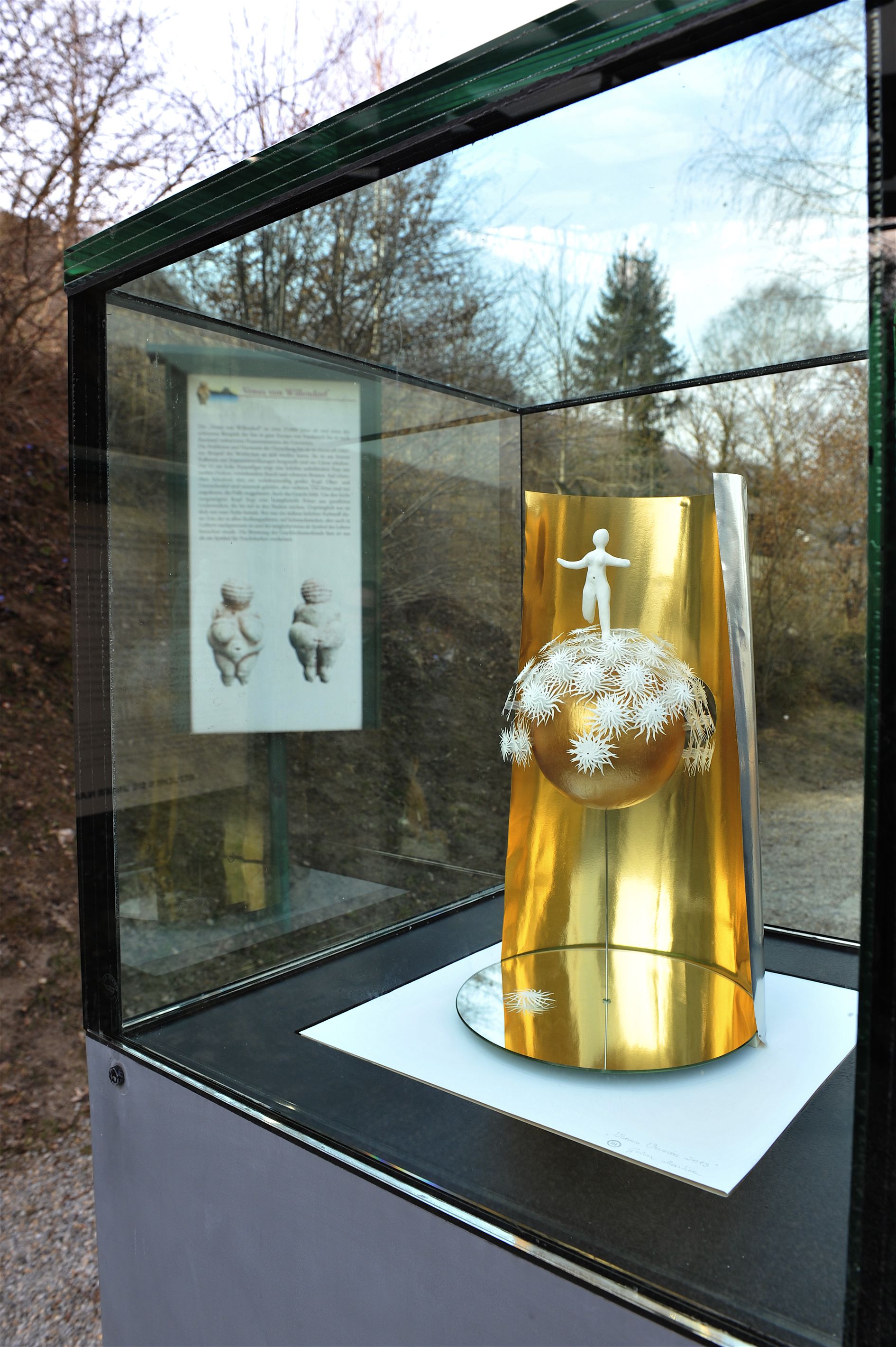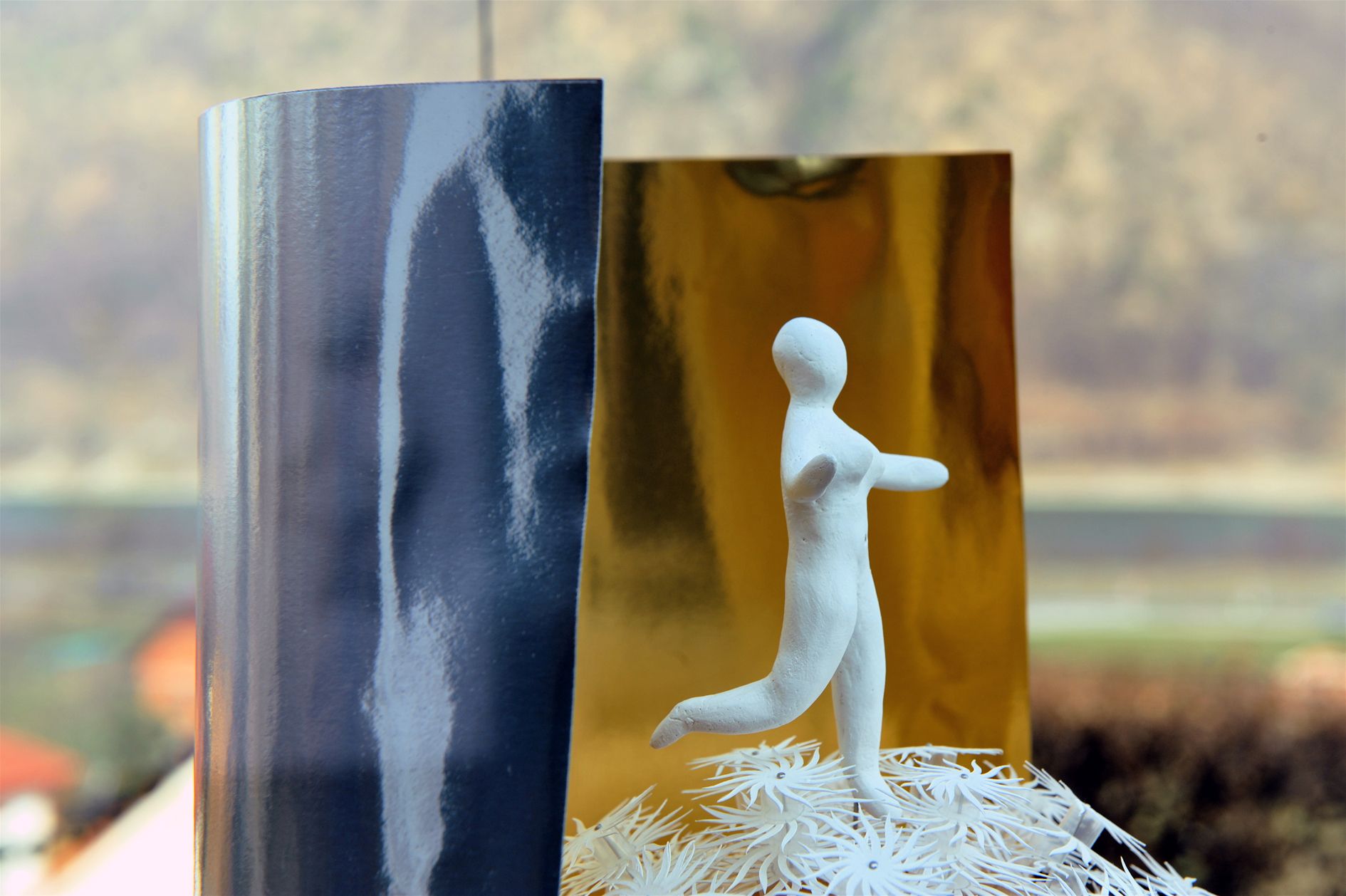Martina Pruzina
:
Venus Version
Back
Information
Martina Golser is the fourth artist to be invited to create an artistic reference to the Venus of Willendorf from 25,000 BC as well as the themes revolving around it. As of March 2013, her sculpture can be seen in the showcase that was originally manufactured for the Venus at the site where it was found in the Wachau valley.
Golser’s art focuses primarily on the world of plants. In her meditative working process, she draws plants and plant structures with delicate and complex forms. Sometimes, she cuts these out of paper with a scalpel. These meticulous drawings of richly detailed organic structures remind us of early Renaissance books about plants, and indeed the artist refers to them as "botanical studies." The artistic process begins with the artist’s intense and detailed observation of nature and her study of books on botany. When Martina Golser decided to no longer work with ceramics in 2006 to devote herself entirely to drawing, she began focusing on microscopic enlargements of plant sections. She now also draws views of plants that she finds on her walks. Fascinated by the potential for direct personal expression offered by drawing and by the language of forms in nature, the artist believes that all forms already exist in nature and therefore cannot be invented. It is fitting that Golser's interpretation of Venus is a small white female figure made of modeling clay, skipping over a bed of flowers on a golden sphere. The sphere is fixed on a thin metal rod attached to a round mirror on the floor of the showcase. The fine white elements cut out of paper with a scalpel represent dandelion blossoms, generally also known as "blowballs". This plant may look delicate, but its roots are strong. To this day, botanists have not been able to completely explain the mystery of its reproduction. What we do know is that the dandelion is one of the most successful plants in the world in terms of propagation. If you pick the flower, the roots will be stimulated to enormous growth. The plant also propagates by disbursing seeds that are attached to delicate umbrellas. These fly from one continent to another, carried by intercontinental airstreams.
The artist, who is somewhat of an expert in botany, chose this robust plant as a symbol for the primordial woman. With her arms outstretched, she runs with apparent ease on a ball that could be interpreted as the world and our existence. Like the question of how the dandelion reproduces, the significance of the female figure found during construction in Willendorf in 1908 is cause for debate in historical research. Martina Golser provides her own answer with a symbolic allegory in which strength and delicacy are inseparably connected. (Cornelia Offergeld)



